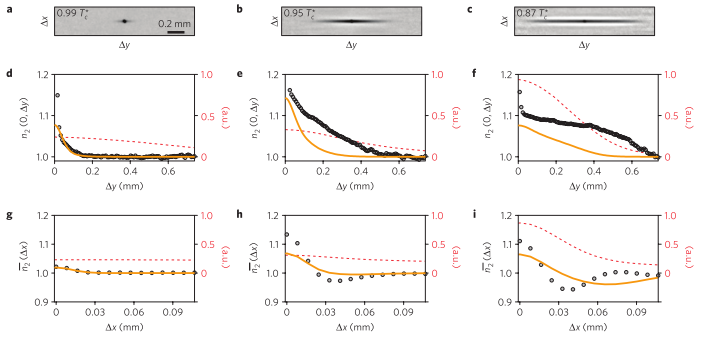Hanbury Brown and Twiss
Hanbury Brown and Twiss correlations—correlations in far- field intensity fluctuations—yield fundamental information on the quantum statistics of light sources, as demonstrated after the discovery of photon bunching. Drawing on the analogy between photons and atoms, similar measurements have been performed for matter-wave sources, probing density fluctuations of expanding ultracold Bose gases. We used two-point density correlations to study how coherence is gradually established when crossing the Bose–Einstein condensation threshold. Our experiments reveal a persistent multimode character of the emerging matter-wave as seen in the non-trivial spatial shape of the correlation functions for all probed source geometries, from nearly isotropic to quasi-one- dimensional, and for all probed temperatures. The qualitative features of our observations are captured by ideal Bose gas theory, whereas the quantitative differences illustrate the role of particle interactions.
A. Perrin, R. Bücker, S. Manz, T. Betz, C. Koller, T. Plisson, T. Schumm, and Jörg Schmiedmayer.
Hanbury Brown and Twiss Correlations Across the Bose–Einstein Condensation Threshold.
Nature Physics 8 (2012): 195
